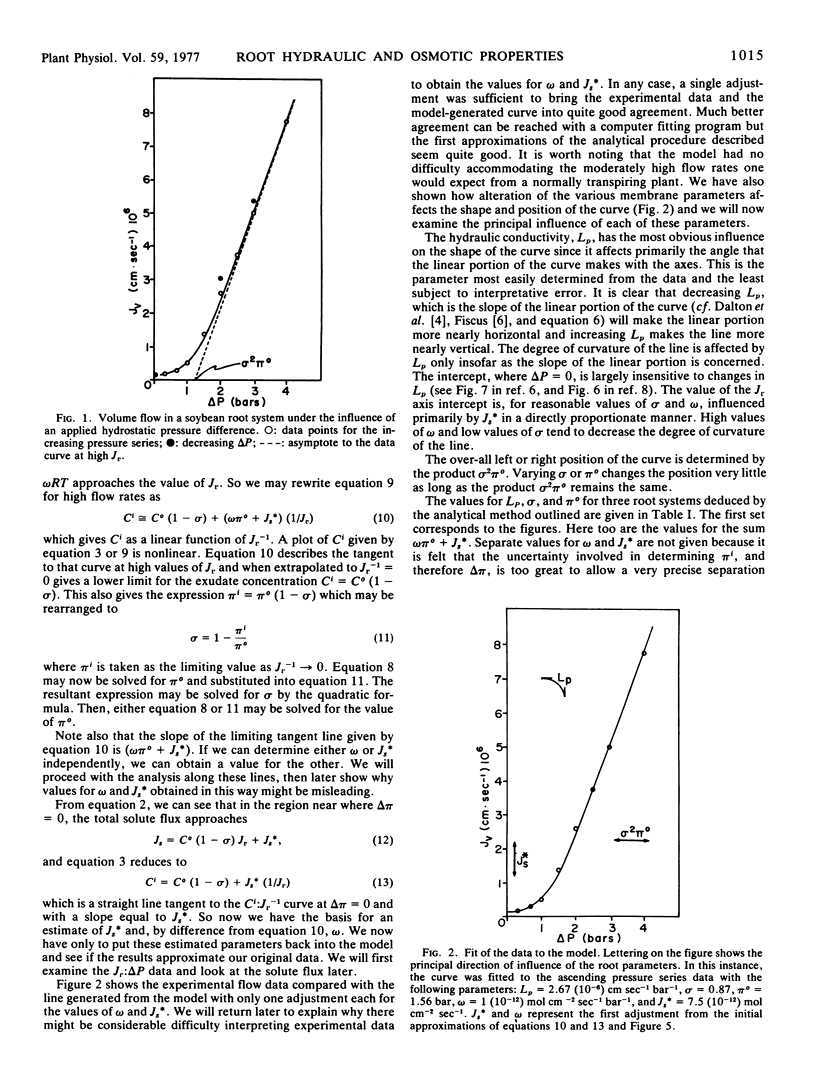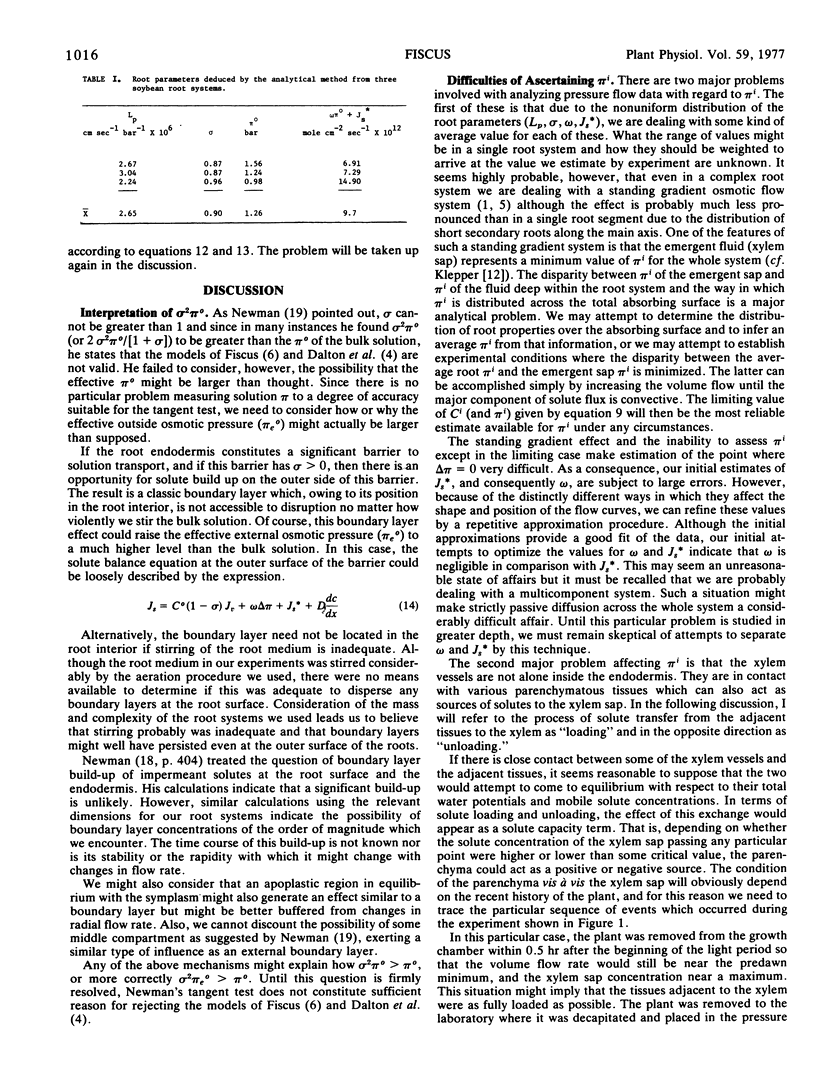Abstract
An analytical technique which allows the experimental determination of soybean (Glycine max L.) root properties is presented. Two major problems hamper the interpretation of experimental data. These are: (a) the influence of a possible boundary layer which raises the effective value of π ° above that of the bulk solution; and (b) the difficulty of obtaining an adequate measure of the internal osmotic pressure except at high values of volume flow rate due primarily to possible exchanges of solutes between the xylem and adjacent tissues. Consideration of these two problems leads to an interpretation of previous models which is reconcilable with the criticisms of Newman (Plant Physiology 1975 57: 738-739).
In these experiments, estimates of hydraulic conductivity and reflection coefficient are based on high flow rate data where the osmotic effects are minimized. Because of the difficulties attached to the evaluation of πi, at low and moderate flow rates, any technique for evaluating root parameters which depends on knowledge of when the osmotic pressure difference (in bars) is zero will be subject to large errors, at least until both problems metioned above have been adequately resolved.
An additional problem which must be dealt with in terminal root segments is the effect of a standing osmotic gradient. It is thought that this is not a serious problem in a complex root system.
Transpiration rates are calculated on the basis of leaf and root surface areas and experimentally determined root volume flow. It is shown that root flow rates necessary to sustain high transpiration rates in the shoots are easily accommodated by the model at moderate levels of applied pressure difference.
Full text
PDF







Selected References
These references are in PubMed. This may not be the complete list of references from this article.
- Diamond J. M., Bossert W. H. Standing-gradient osmotic flow. A mechanism for coupling of water and solute transport in epithelia. J Gen Physiol. 1967 Sep;50(8):2061–2083. doi: 10.1085/jgp.50.8.2061. [DOI] [PMC free article] [PubMed] [Google Scholar]
- Downs M. P. The identification of congenital deafness. Trans Am Acad Ophthalmol Otolaryngol. 1970 Nov-Dec;74(6):1208–1214. [PubMed] [Google Scholar]
- Fiscus E. L., Kramer P. J. General model for osmotic and pressure-induced flow in plant roots. Proc Natl Acad Sci U S A. 1975 Aug;72(8):3114–3118. doi: 10.1073/pnas.72.8.3114. [DOI] [PMC free article] [PubMed] [Google Scholar]
- Fiscus E. L. The Interaction between Osmotic- and Pressure-induced Water Flow in Plant Roots. Plant Physiol. 1975 May;55(5):917–922. doi: 10.1104/pp.55.5.917. [DOI] [PMC free article] [PubMed] [Google Scholar]
- Glass A. D. Regulation of potassium absorption in barley roots: an allosteric model. Plant Physiol. 1976 Jul;58(1):33–37. doi: 10.1104/pp.58.1.33. [DOI] [PMC free article] [PubMed] [Google Scholar]
- KEDEM O., KATCHALSKY A. Thermodynamic analysis of the permeability of biological membranes to non-electrolytes. Biochim Biophys Acta. 1958 Feb;27(2):229–246. doi: 10.1016/0006-3002(58)90330-5. [DOI] [PubMed] [Google Scholar]
- MEES G. C., WEATHERLEY P. E. The mechanism of water absorption by roots. I. Preliminary studies on the effect of hydrostatic pressure gradients. Proc R Soc Lond B Biol Sci. 1957 Dec 3;147(928):367–380. doi: 10.1098/rspb.1957.0056. [DOI] [PubMed] [Google Scholar]
- Newman E. I. Interaction between Osmotic- and Pressure-induced Water Flow in Plant Roots. Plant Physiol. 1976 May;57(5):738–739. doi: 10.1104/pp.57.5.738. [DOI] [PMC free article] [PubMed] [Google Scholar]


